Music Educators Association of New Jersey
Serving teachers and students since 1927


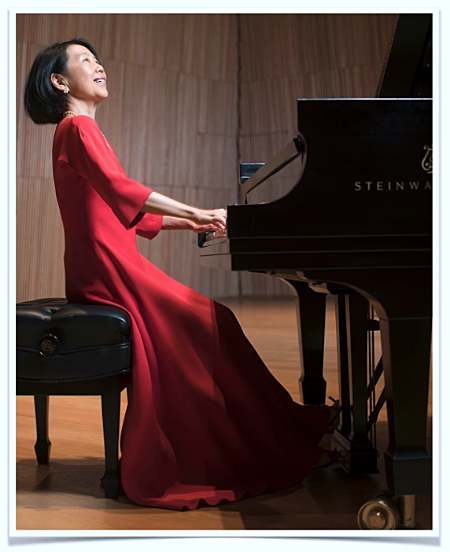
Donna Weng Friedman introduced four distinguished composers, played videos of her performances of some of their pieces, and then led a live panel discussion. Following President Danette Whelan’s opening remarks, Programs Chair Sophia introduced Ms. Friedman, who was recently designated “one of Musical America’s Top 30 Professionals of 2024.” (See this link.) Donna Weng Friedman had a “traditional Chinese upbringing;” she followed traditions. But when it came to finding new music that would appeal to her students, she went beyond the usual choices of today’s teachers to discover pieces by living composers. These pieces were mostly program music with titles suggesting a subject or story that would evoke a student’s response. Here were appropriate challenges in interpretation, articulation, dynamics, pedaling, and fingering patterns. Donna’s wonderful taped performances made a most convincing argument for using these materials. The wide range of difficulty adds to their appeal. Music can be ordered at the respective websites included in this report.
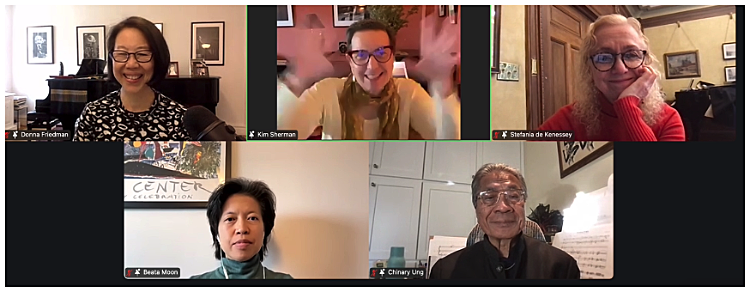
Cecile Chaminade, (1857-1944), the first composer discussed, exemplified composers who were ahead of their time. Shrewd in business, she overcame barriers to female composers to enjoy great popularity in the late 19th and early 20th century. Then a barrage of unfavorable reviews in 1908 drove her into relative obscurity. There is a Chaminade revival in recent years. We heard “Les Sylvains,” a very lovely piece with alternating moods: section A, a beautiful melody in cello, recurring in viola, and violin registers accompanied by syncopated chords followed by the contrasting section B, sparkling passage work, frills and trills. After several cycles, a final A section returns, meno mosso.
Then the discussion moved to our guest composers. Beata Moon, of Korean ancestry, studied with Adele Marcus at Juilliard. She has a most impressive biography. See beatamoon.com. Donna Weng Friedman performed “Prelude,” a moving ostinato in the middle of the keyboard, with high notes dropping through the calm canvas like shimmering jewels. The pattern continues as the ostinato enters the lower register accompanied by a crescendo. After a dramatic climax, there is a brief return to the opening pattern.
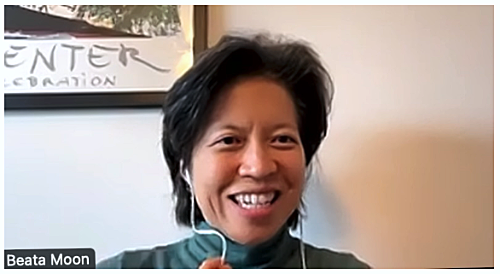
Kim D. Sherman, daughter of a jazz musician father and church organist, described her “Unfathomable Things,” a collection of fifteen pieces grouped in four sets. We heard the first two sets: “Quiet Poems” and “Four Moods.” The music uses rhythmic and tonal patterns and requires the skillful use of the damper pedal. Kim had consulted the teenage piano students so that her compositions would reflect their young thoughts. In the “Four Moods” set, “Unwinding” is a laid back waltz. Composed after Kim consulted a student practicing to fence, the piece called “Fence” suggests movement and combat with its rapid staccato passages and a dialogue between soprano and tenor. “Reflection” has beautiful sonorities: a singing bass, pulsing dyads in right hand, an occasional switch in roles, and long crescendos. A subito piano leads to the closing passage. “Listening to the Moon” employs a two note slurred motif beginning quietly in the middle range of the keyboard and gradually expanding in a crescendo to highest and lowest registers and dynamics before returning to the opening. See kdsherman.com/bio.
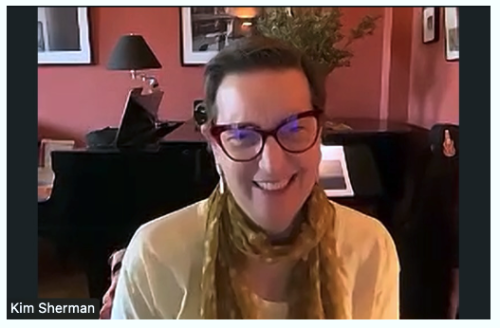
Chinary Ung, a native of Cambodia, entered the United States in the 1960’s to pursue study and a career in music. His website: chinaryung.com. Donna recalled her memories of visiting a Buddhist temple and the feelings it evoked. Chinary Ung combines those Asian influences with those of jazz. In “Space Between the Fish and the Moon,“ we hear ground tones that provide a bass foundation to the glittering action of trills and runs above. The sonorities, dynamics, and use of pedal were amazing.
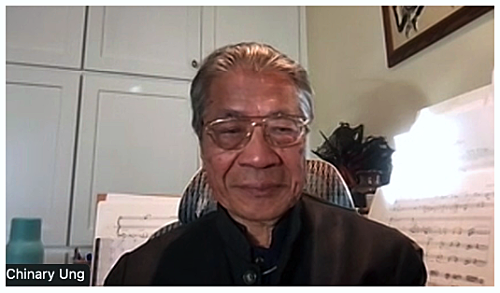
Finally, Stefania de Kenessey, originally from Hungary, told of loving classical music played in her preschool exercise class. The music captivated her. De Kenessey has a most impressive biography at stefaniadekenessey.com.
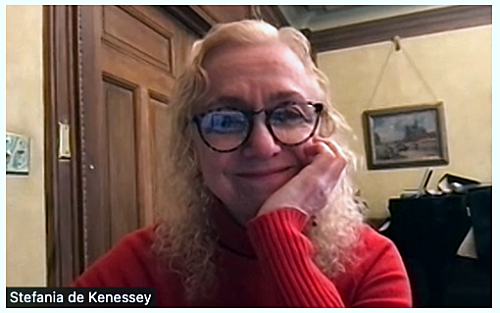
We were treated to “Microvids,” nineteen miniatures for piano that are very accessible to music students. They are very short. Each is given a title that inspires the imagination: “Skipping Stones,’” “Running on Empty,” “Standing Tall,” “Hurry up,” “Clouds,” to name a few. Using melodies, harmonies, rhythms, registers, textures, motifs, and other elements music, Stefania evokes feelings that are suggested by her titles. And she accomplished this in exceedingly short compositions.
The panel participated in answering questions posed by Donna Weng Friedman: when and why did you decide to become a composer; how do you feel when you hear your music performed; does originality ever conflict with accessibility; how were you influenced by your cultural background and experiences; did you ever experience an interruption in your creativity; what about collaborating with actors, dramatic productions; realizing that attention spans may have shortened in the modern era, how do you approach composing larger works.
The answers were fascinating. Chinary Ung had an eleven-year hiatus from composing. The composers were not inclined to write works longer than 25 minutes. On listening to his works performed, Chinary Ung becomes excited when he “hears the performer’s personality come through.” The composers expressed gratitude to those performers and students who play their music.
This was a most fascinating presentation. Donna’s performances of these interesting and accessible pieces should convince teachers to introduce them to their students.
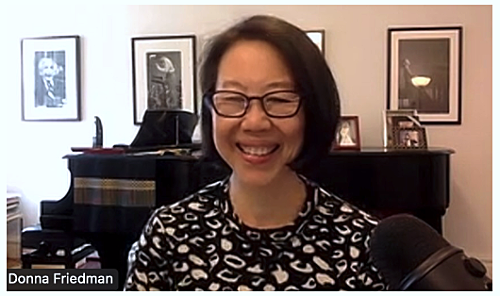
Bertha Mandel, writer
Lisa Gonzalez, photos and layout